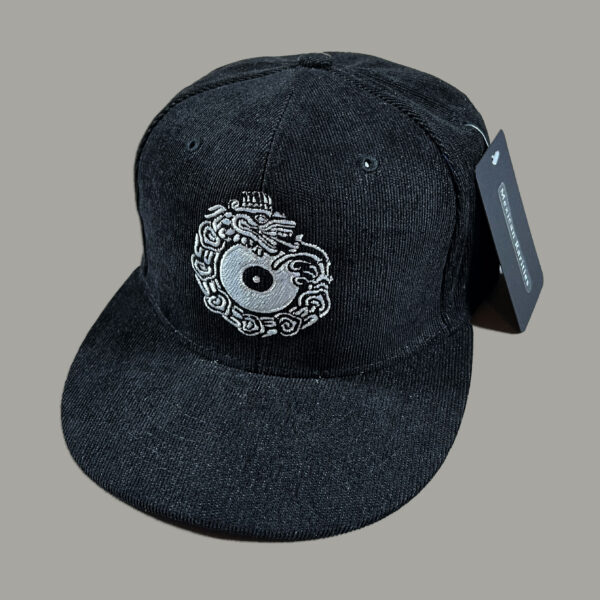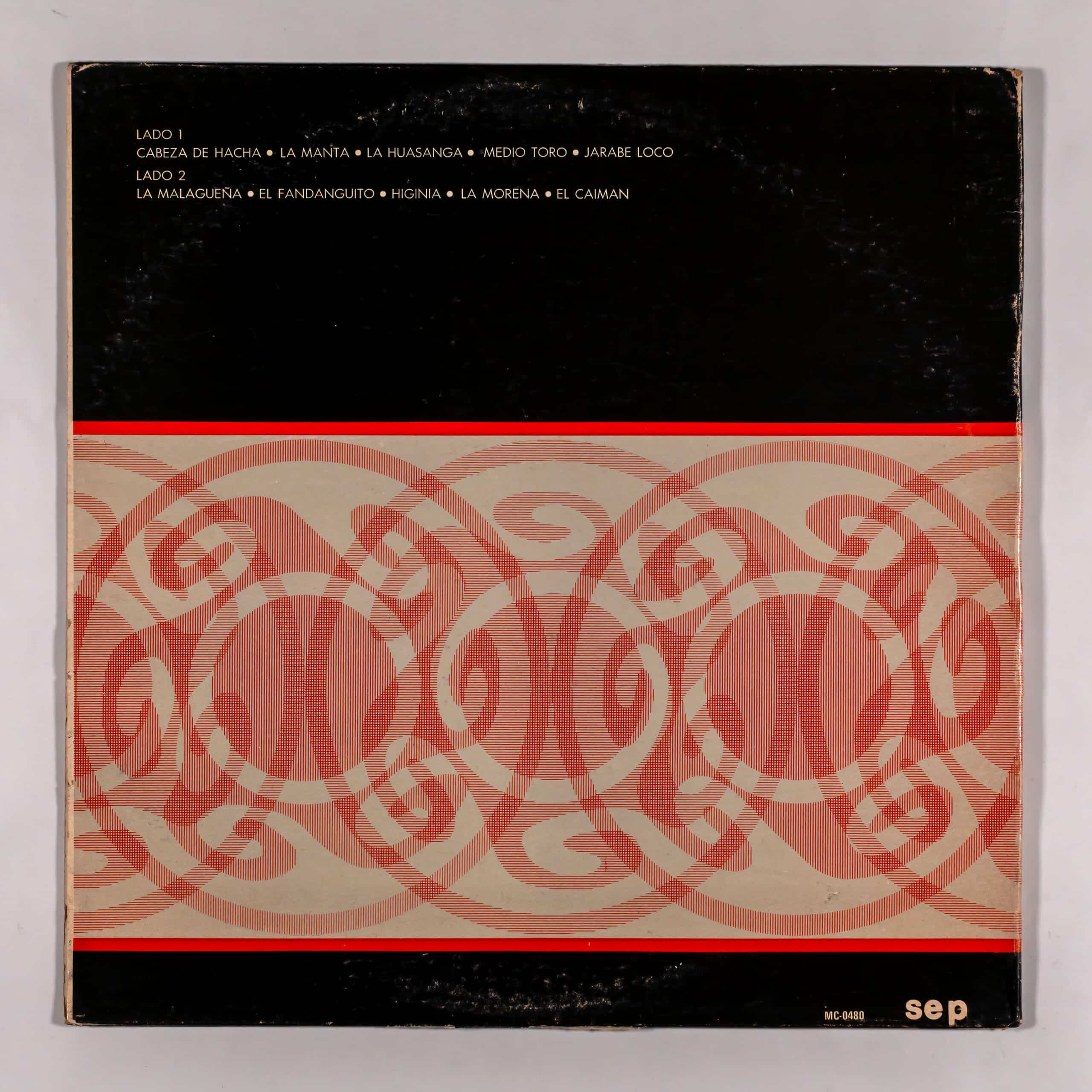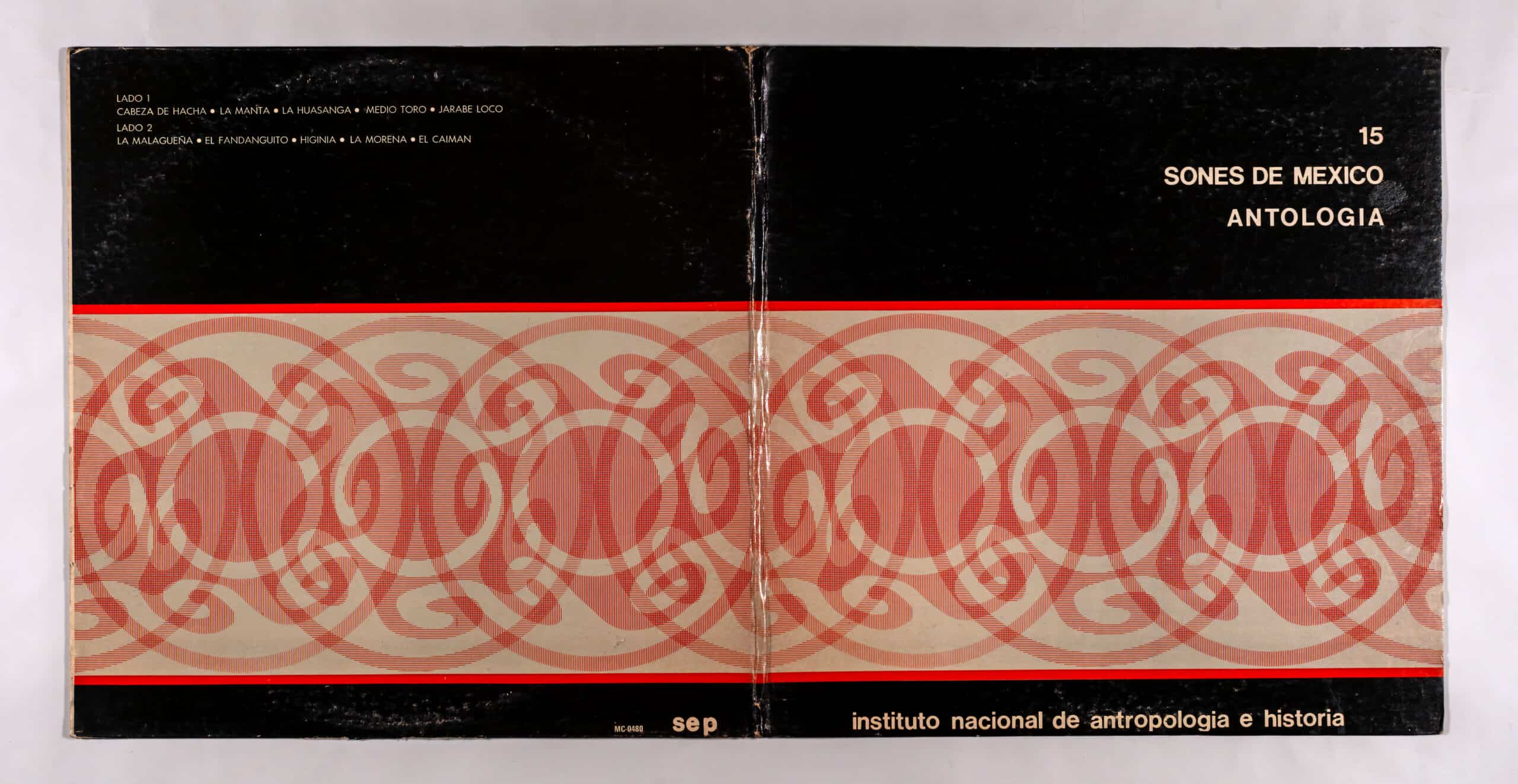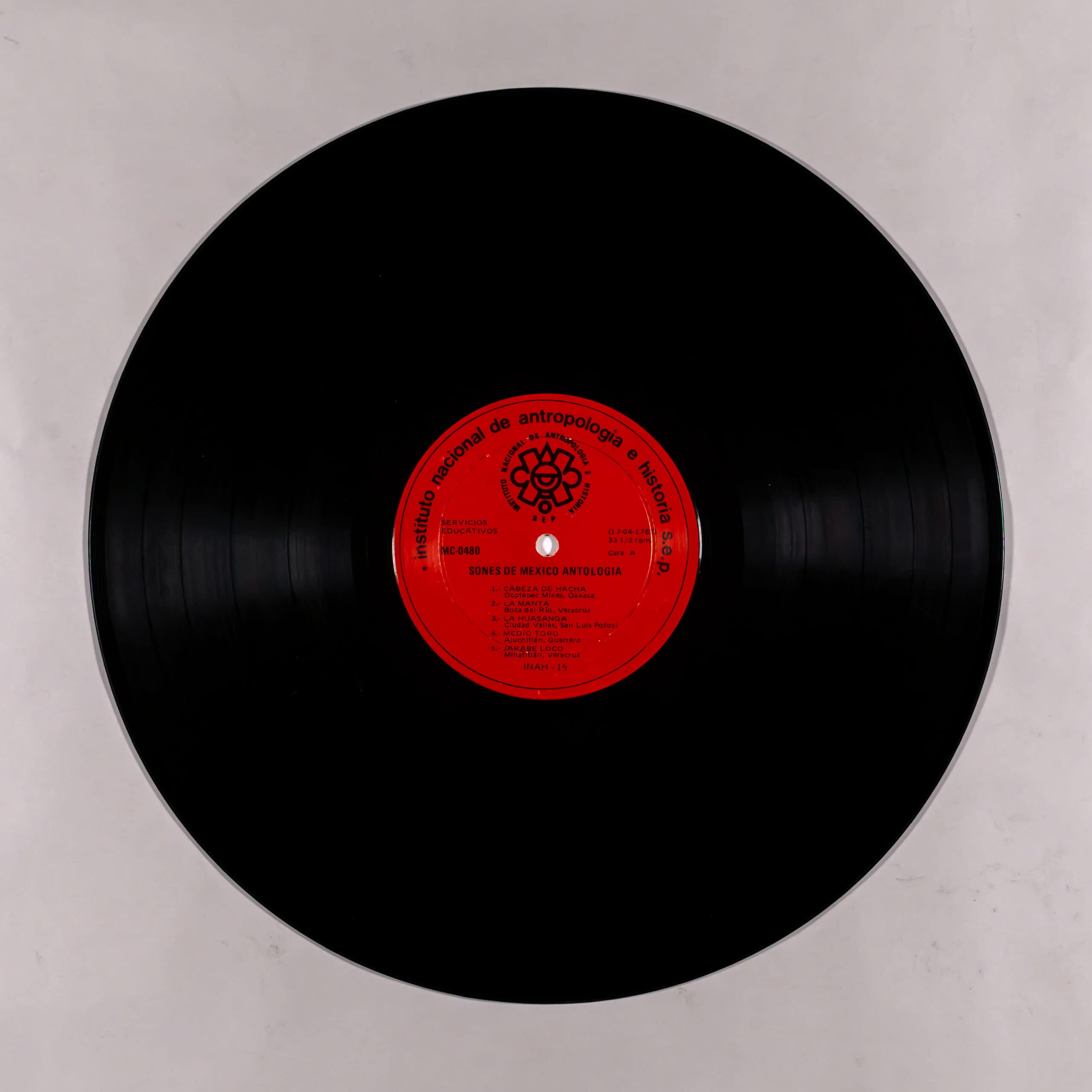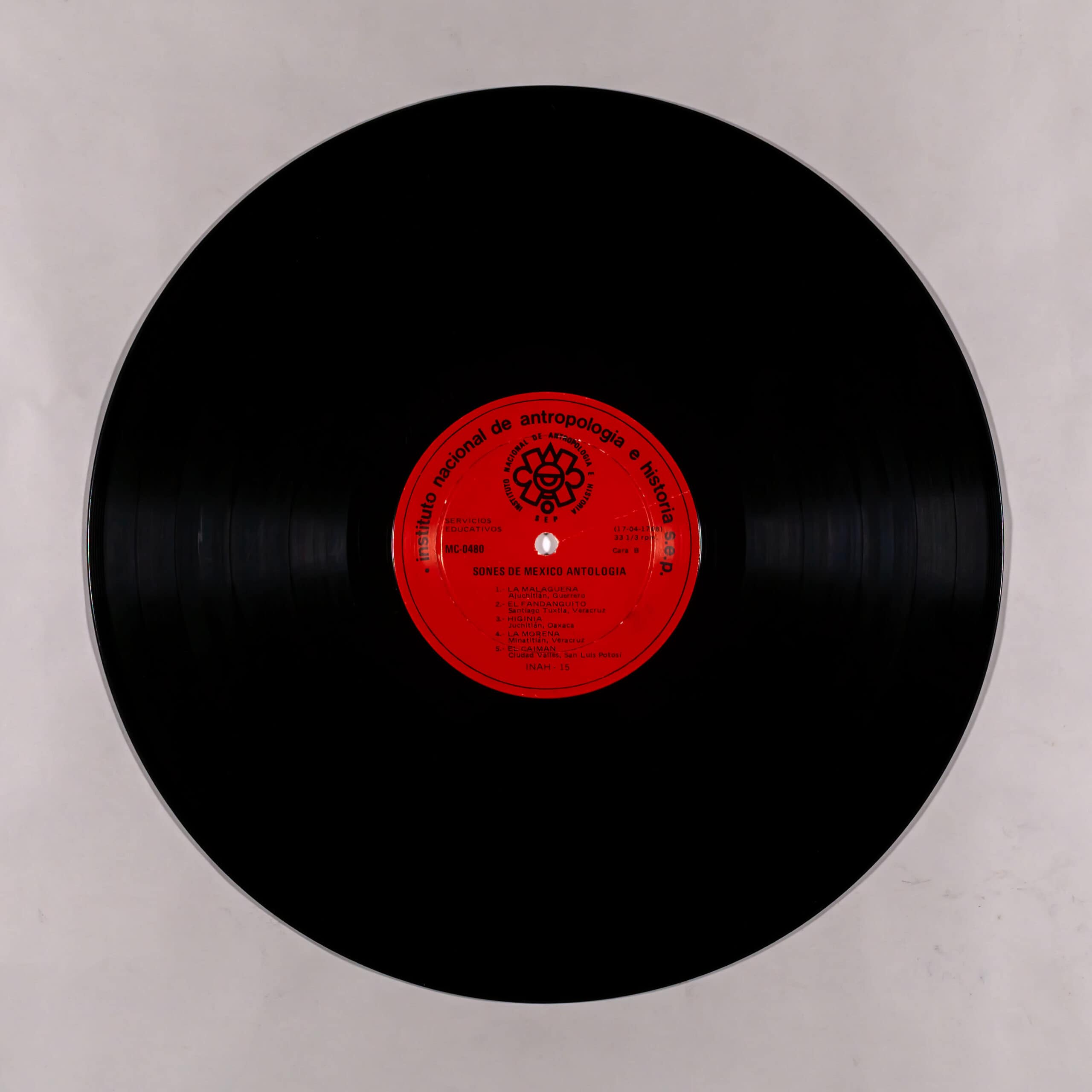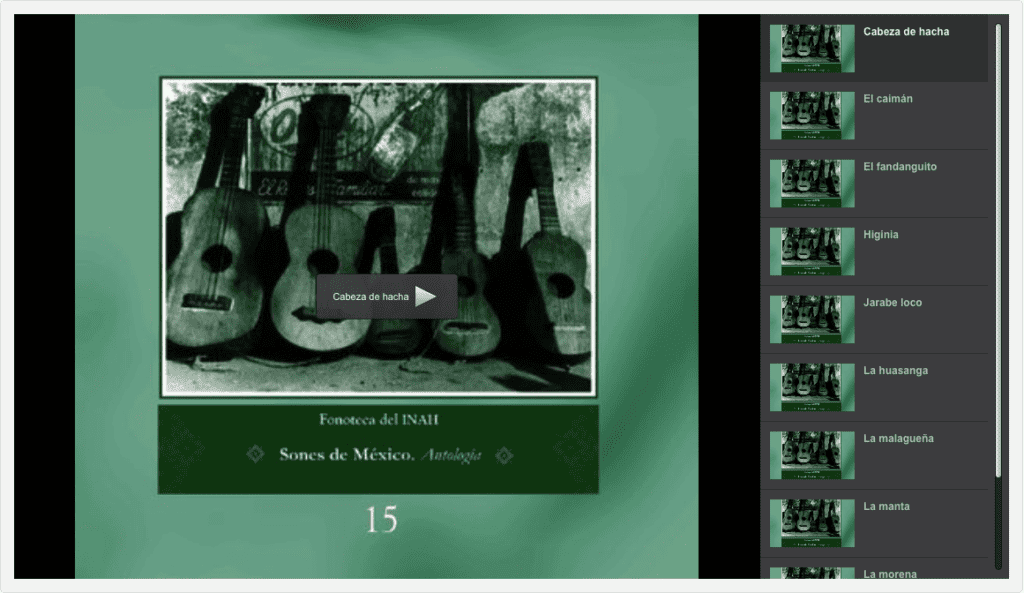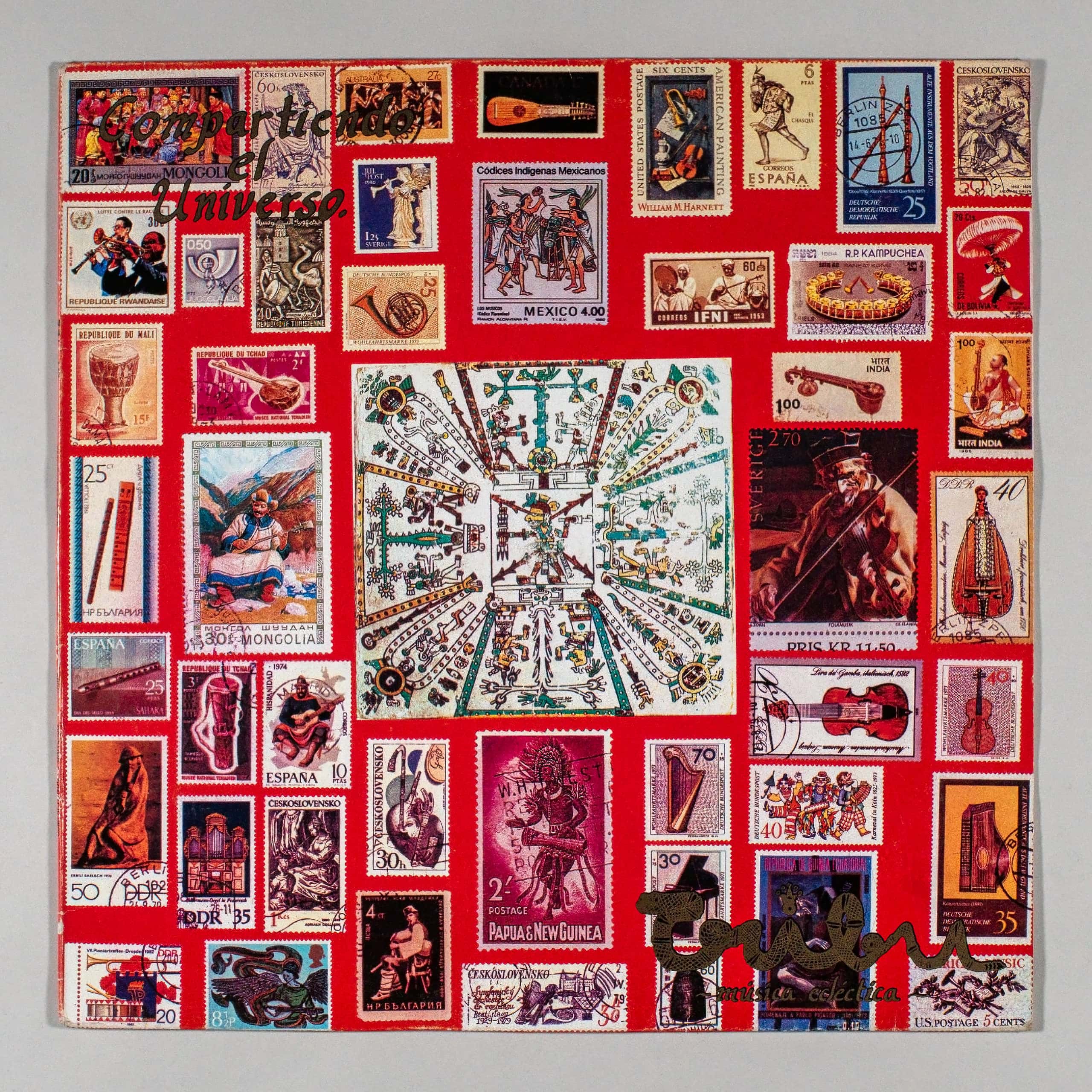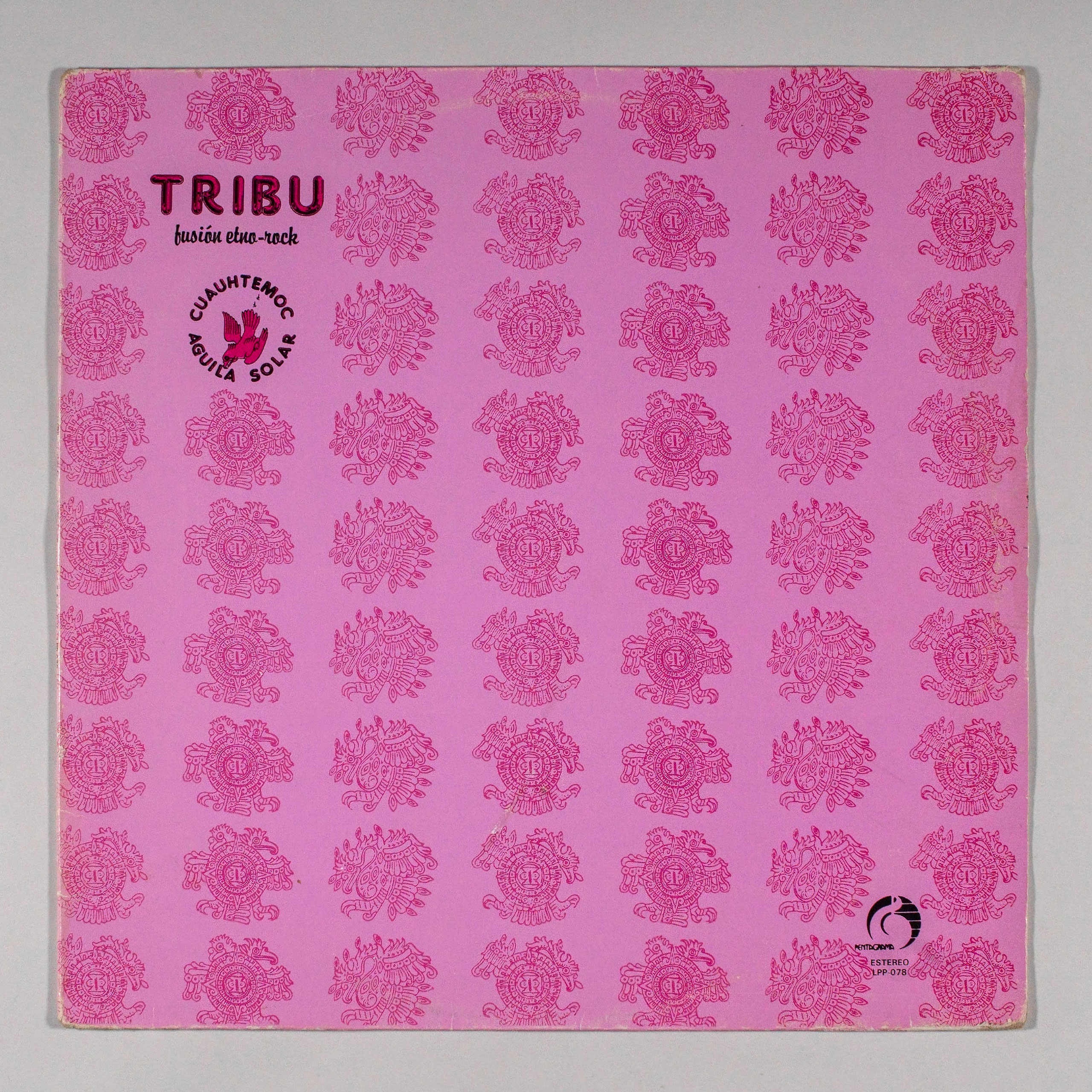SOUNDS OF MEXICO ANTHOLOGY
INAH SEP
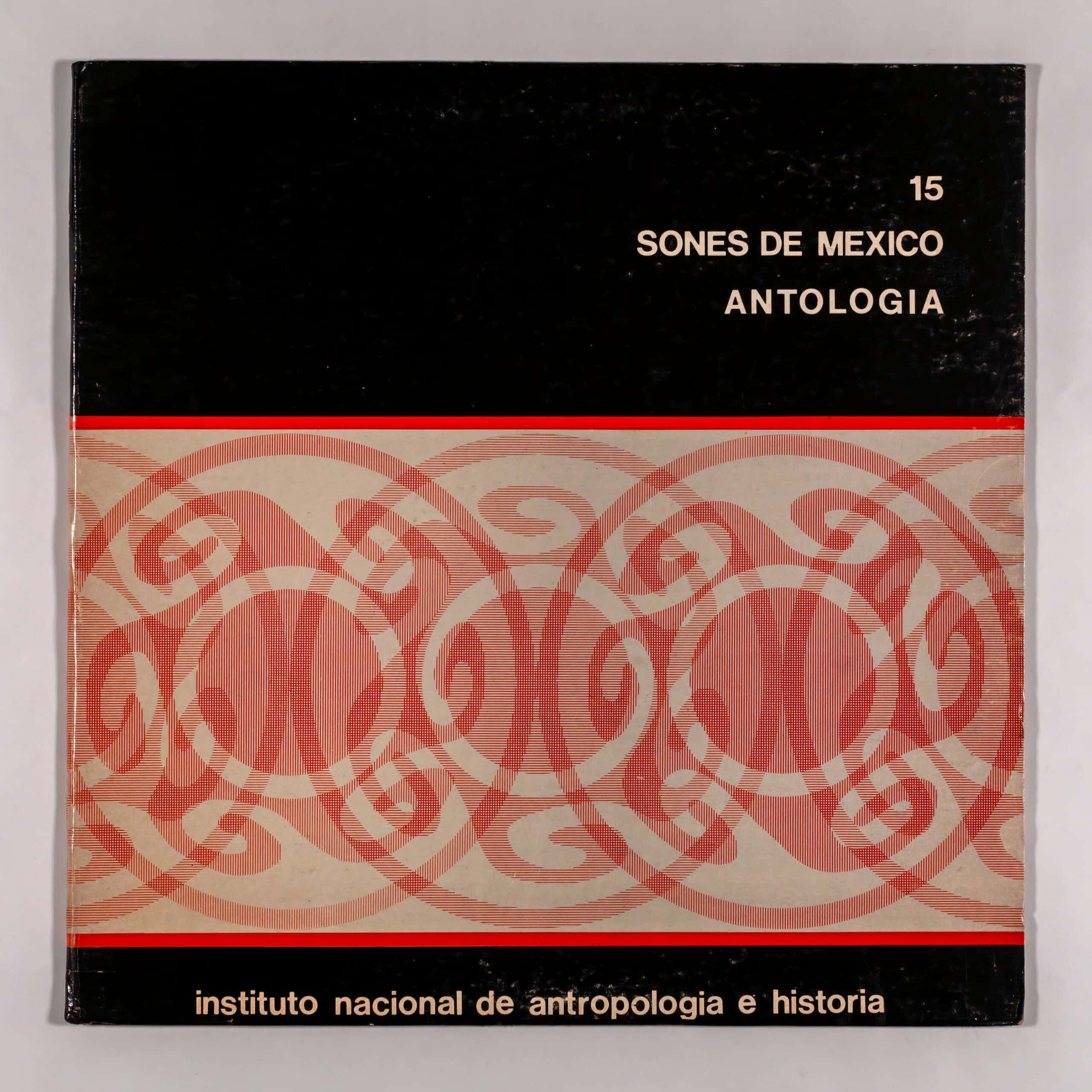
|
Label: INAH-SEP INAH-15, MC-0480 Released: 1974 |
Country: Mexico State: Guerrero Genre: Sound |
Info:
A wide variety of Mexican musical traditions are known by the name of son. In some cases the entire musical tradition of a region is known by that name; this happens on the coast of Veracruz, the hot land of the state of Michoacán, in the Huastecas of Veracruz, San Luis Potosí and Tamaulipas and in other regions of the country. In these cases, the interpretation of the son is associated with a musical group characteristic of the region, such as the group of the large harp of Michoacán, the band of winds of the Isthmus, or as was the mariachi of Jalisco.
Other times the son is a musical genre that serves to accompany the most energetic and brilliant dances that are part of more extensive repertoires, as is the case in the tradition of wind bands in much of the country. Among the indigenous groups, the son is the piece or melodic unit that is part of the dances that are performed on the occasion of the great religious festivals.
On these bases of diversity, the son is the most widespread musical genre in the popular musical tradition of the country.
If the son is considered more as a complex of regional traditions than as a specific genre, it is possible to recognize in it the presence of common elements: the choreographic lyrical character, although the only musical versions that serve to accompany the dance are not uncommon; the choreography of the son is almost always of single couples facing each other, and they frequently include zapateado; in its lyrical part it consists of couplet aggregates, almost always octosyllable quatrains, which intersperse a chorus with syllabic interjections that alter the metric; Due to its theme, the son is clearly profane, loving in most cases, although the lyrical tone is less frequent than the picaresque, and the latter often uses double meanings.
All the shared characteristics of the son can only be explained through a common historical trunk that is reinterpreted and elaborated regionally. The word son, according to Vicente Saldívar, appears for the first time in documentary history in 1766, in a complaint from the Holy Office of the Inquisition of some couplets called Chuchumbé, which were sung and danced in the port of Veracruz; “… With gestures, wiggles, shakes, all contrary to honesty and a bad example of those who see him as assistants, for mixing in him groping from section to section, hugs and giving tummy to tummy; well they also inform me that This is danced in ordinary houses, by mulattoes and people of color who brado, not by serious people, nor by circumspect men, but by soldiers, sailors and brush…” The documentary appearance of the son leaves no doubt about its popular character and allows to speculate about its origin; its association with mulattoes, sailors and brush, may suggest that these sounds were introduced from the Caribbean area and that they were probably popular Spanish tunes, perhaps Andalusian, modified by African influences.
The archive of the Inquisition is rich for the knowledge of the son during the eighteenth century, not only because of its profane and scandalous nature, but also because it frequently had a frankly anticlerical tone. At that time, the son appears mixed and without possible differentiation with the seguidillas, the jarabe and the fandango, of which there are documentary mentions since the 17th century. Even today, in many regional traditions, the son appears undifferentiated compared to the syrup; while in others the latter has acquired an exclusively choreographic character and consists of a suite that strings together several old sones.
In the last third of the eighteenth century, the son is introduced in theater programs, for example in the Coliseo de México. It seems that the public and the businessmen felt the need to include within the performances some local dance pieces that were known by the generic name of “sonecitos del país” – so that they would alternate with those of Spain. Among those “little sons” were some that are still interpreted today as “bamba”, “el bejuquito”, “la indita” and “el gusto.” Nor did the theatrical performances escape the vigilance and condemnation, already somewhat symbolic at that time, of the Courts of the Inquisition. Spanish theatrical music should be considered, therefore, as the second most important current in the formation of the Mexican son.
With the independence of the country, the sound and the syrup change signs: from being persecuted and reprehensible, they are now considered as representations of the national soul. The “sonecitos de la tierra” change their name to “aires nacionales”, and their publication begins in 1834, as they are considered the quintessential Mexican music.
The son is introduced in the salons and is played on the piano during the first half of the 19th century. Marchioness Calderón de la Barca is a witness to the social rise of the son and she tells us how “los enanos”, “el palomo” and “el zapateado” were danced, which are still performed today. Although it suffered from the influence of the cult era, the son never lost its popular character. During the war of intervention against the French it was used as a satirical soul with special lyrics. Perhaps during the nineteenth century the genre reached its widest diffusion, accompanying the great human mobilizations that were generated in the climate of political unrest.
Restoring peace with the Porfiriato, the halls turned their eyes to Europe and forgot the son; while this flourished as a regional style that synthesized the influences received, in original forms. Towards the end of the 19th century and the beginning of the 20th century, a good number of popular interpreters made their appearance, who at the festivals of the great haciendas under the patronage of their owners, gave the regional style its differentiated physiognomy that serves as the basis for its current development.
The nationalism that emerged from the Mexican Revolution once again took the son to areas greater than that of its region. To give two obvious examples of the process, it can be remembered that the Mariachi ensemble made its appearance in Mexico City under the direct patronage of General Cárdenas when he was president of the country, or that Miguel Alemán used the son of “la bamba” as an introduction during his presidential campaign. Many regional musicians such as Lorenzo Barcelata, Andrés Huesca or Silvestre Vargas, were incorporated by the cinema and radio broadcasters and created in Mexico City, where they lived, commercial forms of the regional style. The result of this process has affected performers and local styles very differently and the final effects cannot yet be predicted.
This volume aims to collect a sample of some forms of son in its contemporary popular style. It is not intended to make an inventory, or even collect the most significant currents, works that are yet to be done, but to start the publication, with an anthological approach, of one of the richest and most vigorous popular traditions in the country.
FACE A
1. AX HEAD.– Ocotepec, Mixes, Oaxaca.– The large event bands of the Mixes, which function as community service institutions, have a repertoire that includes above all marches and sones and jarabes. The sones and jarabes are performed at public hearings, and especially at big parties where they serve to accompany the dance. Two styles are observed in the mixe sones: the one that is influenced by the sones from the central valleys of Oaxaca, and the one that is more similar to the isthmeño sones, which are sometimes also called huapangos. The included example corresponds to this second type.
Performers: Ocotepec band with 30 instruments, under the direction of Erasmo Robles Espina.
2. THE BLANKET.– Boca del Rio, Veracruz.– One of the oldest sones from the vast repertoire of Sotavento, which some musicians calculate in 80 different sones. The whole of this area is characterized by the use of the harp, the jaranas and the requinto. The blanket is a son that is related by its shape to that of the bamba, and together with the “butaquito” and “la media bamba”, they can be considered the oldest cycle of the genre, although it may also be the one that has undergone the most modifications. suffered.
text:
1)
Oh, to sing the blanket (repeat twice)
needed, (repeat)
(repeat chorus)
A little grace (repeat twice)
and another little thing, (repeat)
(repeat chorus)
Chorus:
Oh, let’s go to bed
that I’m already dying,
that I will carry the blanket, blanket,
and you the patch. (repeat)
(repeat chorus)
2)
If my girlfriend gave me a present (repeat twice)
for her to use it
in Easter.
(repeat chorus)
It was an embroidered handkerchief, (repeat twice)
it was so fine
which was a blanket.
(repeat chorus)
(Repeats the chorus but the chorus modifies the answer as follows:)
And let’s go to bed
and let’s go to sleep
that you will carry the blanket,
the blanket, blanket,
and I the lamp.
3)
Going after women (repeat twice)
I love everything. (repeat)
(repeat chorus)
I give to my loves (repeat twice)
they are so fine
like the blanket.
(repeat chorus)
(Repeat the chorus the same as 2.)
Performers: Isidro Gutierrez, jarana; Daniel Cabrera, jarana; Eusebio Arsola, proclamation and revelry; Narciso Huerta, jarana; Tirso Velazquez, harp.
3) THE HUASANGA.– Ciudad Valles, San Luis Potosi.– One of the great sones, due to its difficulty, of the Huastec regional style also, called huapango, which is characterized by the use of falsetto in singing. This variety is accompanied by violin, eight-string huapanguera guitar and five-string jarana.
text:
1)
Oh the…
Last night I dreamed three times
to the owner of my love,
I told him don’t kiss me
because I have the flavor;
fulfill what you offer me
Oh, the…
2)
At the foot of the main altar.
oh the…
I cut the flower of a ruby
believing it was from Anona,
then I didn’t know her,
its aroma invigorated me.
Tell me yes once
that in the end God forgives us.
3)
Oh the…
I’m looking at you from here
and you don’t see me.
My life, tell me until when
you make me walk around here:
get me out of sorrowing
at once tell me yes.
4)
Oh the…
I swear and promise you
as a man that I am and have been,
and with experience I say
I don’t want another prieto,
I don’t want another prieto,
want what I wanted.
Performers: Trío los Cantores de Valles. Dionisio Ramos, violín: Crescencio Martínez, jarana; José Navarro, huapanguera.
4. HALF BULL.– Ajuchitlán, Guerrero.– They are instrumental that is played for the jaripeos or bullfights in the hot land of Guerrero. This type of sones, with names of animals and in which the dancers imitate their movements, have been documented since the 18th century. The tierra caliente ensemble is made up of two violins, two guitars, and a double-headed drum called a tamborita.
Performers: Ajuchitlan ensemble. Anselmo Leandro, second violin; José Natividad Leandro, first violin, Santiago Leandro, guitar; Teodoro Leandro guitar: Catarino Miranda, drum.
5. CRAZY SYRUP.– Minatitlan, Veracruz.– One of the best known sones from Veracruz; It is part of the different regional repertoires that interpret this genre. The version included corresponds to the style practiced in the south of the state, where the ensemble is formed only with jaranas and requinto. It has been considered that this regional variant preserves the oldest forms and style of the son jarocho.
text:
1)
This is crazy syrup
that raises the dead,
that raises the dead,
this is crazy syrup
that raises the dead.
(repeat second voice)
come out of the grave
head shaking,
head shaking,
come out of the grave
shaking her head.
This is crazy syrup
that raises the dead.
(repeat second voice)
And down again
down again,
bridge they call it
my eyes wanted
my eyes wanted
see the water run
I extended the view
to better see,
Under the bridge
there was a woman,
I was stunned,
I was stunned
and seeing her bathe
she looked like a mermaid
she looked like a mermaid
Sea Mermaid,
of the singing sea,
Do not be ignorant
with the one who adores you
castile rose,
castile rose,
white poppy
you know that for you
you know that for you
my heart cries.
2)
to sing the syrup,
That’s why I paint myself
That’s why I paint myself.
to sing the syrup,
That’s why I paint myself.
(Repeat the second vor)
to pray the rosary
my brother who died,
that if he was sanctuary
not rogue like me,
not rogue like me.
(repeat second voice)
And tonight is when,
and tonight is when
you have to invent
if you know how to want,
if you know how to want,
if you know how to love
white dove,
white dove
coral peak
take my good
this memorial:
that I’m loving her
that I’m loving her
I’m loving her
because me without her
I don’t eat or drink
I don’t have dinner either
because hers loves
They bring me something crazy.
Performers: Arcadio Hidalgo, town crier and revelry; Antonio Garcia de Leon, second voice and jarana; Benito Gonzalez, partying; Noe Gonzalez, requinto.
FACE B
1. THE MALAGUENA.– Ajuchitlan, Guerrero.– One of the sones that is preserved in various regional traditions, such as the Huasteca region and the Veracruz coast, as well as the hot land of Guerrero. It is a lyrical son derived from an Andalusian popular song. The accompaniment in this case is done by plucking the strings.
text:
1)
In the name of God, (repeat)
The joy has already begun.
I’m going to sing with shame
because I don’t know yet.
2)
because me without her
I don’t eat or drink
I don’t have dinner either
because hers hers loves
They bring me something crazy..
3)
Now I’m going to teach myself (repeat)
to sing to them another day.
What if she had spoiled me (repeat)
and I would not have cried
but since she did not make me angry
happy I’m walking.
Alone they go down to the water (repeat)
her sorrows…
The one who goes for a walk, (repeats)
he moves away from his house,
it is not possible that he has to find
the woman as he leaves her,
just make it very formal (repeat)
(or that he can’t) … old.
Performers: Ajuchitlan ensemble.
2. THE FANDANGUITO.– Santiago Tuxtla, Veracruz.– One of the most important sones of the jarocho repertoire. This version corresponds to the most rustic regional style according to its own interpreters, the Mexican-speaking indigenous people of the Los Tuxtlas area. Here, too, the son is interpreted with the accompaniment of requinto and jarana, a variety of the latter: the fourth is exclusive to this area.
Performers: Francisco Trujillo, fourth guitar; Angel Trujillo, third guitar; Dionisio Vichi Maza, second guitar; Juan Zapata, requinto.
3. HIGINIA.– Juchitan, Oaxaca.– The Istmeño son for tap dance is associated with the wind band as an Instrumental ensemble. The son consists of three parts in which the melody is followed, which is sometimes sung, and which alternates with three parts that serve to accompany the difficult tap dance. The example included is one of the classics of the wide and original repertoire of istmeño sones.
Performers: Band directed by Joel Velázquez, with 9 instruments.
4. THE BRUNETTE.– Minatitlan, Veracruz.– This son, from the Veracruz repertoire, is the one most frequently used to accompany improvisations between two singers. The included version uses traditional couplets, but allows improvisation in the game of repetitions with the second voice. Only the couplets for the first voice are included in the text.
texto:
1)
where the love flower
that already merit was opened,
in the middle it had a sign
He told me very clearly:
do not faint guitar player
Tell me like the first day.
Chorus:
Oh, bye-bye, brunette, bye-bye,
another turn like this came out,
like the rice flower
when at night you smell,
I only ask my God
that they have no one to celebrate you,
jealousy gave me your voice
even my heart hurts.
2)
you are tyrant love
that looks modest,
and to the beat of my jarana
and from my chest I sing to you,
in forgetting me you win
as much as I love you so much.
Chorus:
My brunette, brunette,
Bye-bye, bye-bye,
where the flower of…
That already merit was opened,
in the middle it had a line
how clearly he told me:
do not faint heart,
Tell me like the first day.
3)
purple leaf tree
that you protect my sadness,
I already told you beloved garment
don’t talk to him
Even if I don’t tell you anything
but it doesn’t seem to me.
Chorus:
Oh, bye-bye, brunette, bye-bye,
another little turn, goodbye,
give me your right hand
I’m going to say goodbye
let it harvest you
What am I going to tell you?
4)
if i had the glow
from that your warm look,
if you gave me your love
the balm that soothes me
and even the creator himself
he would die of envy.
Chorus:
My brunette, my brunette
Bye-bye, bye-bye,
where the coyol flower
that already
to merit it opened,
in the middle it had a line
how clearly he told me:
do not faint, heart,
Tell me like the first day.
Performers: Benito González, jarana y primera voz; Antonio García de León, jarana y segunda voz; Noé González, requinto.
5. THE ALLIGATOR.– Valles City, San Luis Potosi.– They are from the Huasteca tradition, with a festive intention, which uses fantastic arguments. This type of sones, with culterana influence, became popular towards the beginning of this century in various regions of the country.
text:
1)
walking calmly
I saw a poppy bloom,
I told my partner:
don’t leave the panga alone,
this alligator is a matrero,
My dick has already burst.
2)
All over the royal port
Campeche bars have been, (?)
if you want to go for a walk
when the sound is played,
to meet the alligator
and see where he was born.
3)
in the old testament
the alligator was military,
from corporal he rose to sergeant,
from sergeant to captain,
and he was very happy
when he was promoted to general.
4)
The alligator had culture
to be a great writer
and he was studying to be a priest
in Dolores, Guanajuato,
and he did something crazy
that he did not even reach the parish.
Performers: Trio Three Huastecas’ soul: Alberto Barragán, violin; Pablo Alvarado Hernández, jarana; Nicolás Martínez Ponce, huapanguera.
Notes by Arturo Warman.
Secretary of Public Education, Mr. Porfirio Muñoz Ledo
Undersecretary of Culture and Popular Diffusion, Mr. Víctor Flores Olea
Director of the National Institute of Anthropology and History.
Professor Gaston Garcia Cantu
Director of Museums,
Professor Iker Larrauri
Disc Series Coordinator,
Professor Ma. Cristina S. de Bonfil
Director of the Disc Series,
teacher Irene Vázquez Valle
Mexico, 1977 © 2nd. edition.
Tracklist:
SOUNDS OF MEXICO ANTHOLOGY
SIDE 1
- A1 Ax head.–Ocotepec de Mixes, Oaxaca.
Performer(s): Band from Ocotepec with 30 instruments, under the direction of Erasmo Robles Espina.
- A2 La manta.–Boca del Río, Veracruz.
Performer(s): Isidro Gutierrez, partying; Daniel Cabrera, partying; Eusebio Arsola, proclamation and revelry; Narciso Huerta, partying; Tirso Velazquez, harp.
- A3 La huasanga.–VallesCIty, San Luis Potosi.
Performer(s): Trio of the singers of Valles. Dionisio Ramos, violin; Crescencio Martinez, partying; Jose Navarro, huapanguera.
- A4 Medio toro.–Ajuchitlan, Guerrero.
Performer(s): Ajuchitlan ensemble. Anselmo Leandro, second violin; Jose Natividad Leandro, first violin; Santiago Leandro, guitar; Teodoro Leandro, guitar; Catarino Miranda, drummer.
- A5 Crazy syrup.–Minatitlan, Veracruz.
Performer(s): Arcadio Hidalgo, crier and janara; Antonio García de Leon, second voice and jarana; Benito Gonzalez, partying; Noé Gonzalez, requinto.
SIDE 2
- B1 The malaguena.–Ajuchitlan, Guerrero.
Performer(s): Ajuchitlan ensemble. Anselmo Leandro, second violin; Jose Natividad Leandro, first violin; Santiago Leandro, guitar; Teodoro Leandro, guitar; Catarino Miranda, drummer.
- B2 The fandanguito.–Santiago Tuxtla, Veracruz.
Performer(s): Francisco Trujillo, fourth guitar; Ángel Trujillo, third guitar; Dionisio Vichi Maza, second guitar; Juan Zapata, requinto.
- B3 Higinia.–Juchitlan, Oaxaca.
Performer(s): Band directed by Joel Velázquez, with 9 instruments.
- B4 The brunette.–Minatitlan, Veracruz.
Performer(s): Benito Gonzalez, jarana and first voice; Antonio García de Leon, jarana and second voice; Noe Gonzalez, requinto.
- B5 The alligator.–Valles City, San Luis Potosi.
Performer(s): Trio Three Huastecas’ soul: Alberto Barragan, violin; Pablo Alvarado Hernandez, jarana; Nicolas Martínez Ponce, huapanguera.
Credits:
Arturo Warman.
Secretary of Public Education, Mr. Porfirio Muñoz Ledo.
Undersecretary of Culture and Popular Diffusion, Mr. Víctor Flores Olea.
Director of the National Institute of Anthropology and History, Professor Gastón García Cantú.
Director of Museums, Professor Iker Larrauri.
Coordinator of the Record Series, Professor Ma. Cristina S. de Bonfil.
Director of the Record Series, teacher Irene Vázquez Valle.
Arturo Warman: Engraver, Adjunct Material Writer
Victor Acevedo Martínez: Editor
Martín Audelo Chícharo: Editor
Guadalupe Loyola Zárate: Editor
Benjamín Muratalla: Editor, Director
Irene Vázquez Valle: Editor
H. Alejandro Castellanos Garrido: Editor, Researcher
Gabriela González Sánchez: Editor
Guillermo Pous Navarro
Alfredo Huertero Casarrubias: Illustrator
Guillermo Santana Ramírez: Designer
Ocotepec Band: Musician
Erasmo Robles Espina: Musician
Isidro Gutiérrez: Musician
Daniel Cabrera: Musician
Eusebio Arsola: Musician
Narciso Huerta: Musician
Tirso Velázquez: Musician
Los Cantores de Valles Trio: Musician
Dionisio Ramos: Musician
Ajuchitlán Ensemble: Musician
Anselmo Leandro: Musician
Arcadio Hidalgo: Musician
Antonio García de León: Musician
Benito González: Musician
Noé González: Musician
Francisco Trujillo: Musician
Angel Trujillo: Musician
Dionisio Vichi Maza: Musician
Juan Zapata: Musician
Trio Las tres huastecas: Musician
Alberto Barragán: Musician
Pablo Alvarado Hernández: Musician
Nicolás Martínez Ponce: Musician
Notes:
Notes by Arturo Warman.
